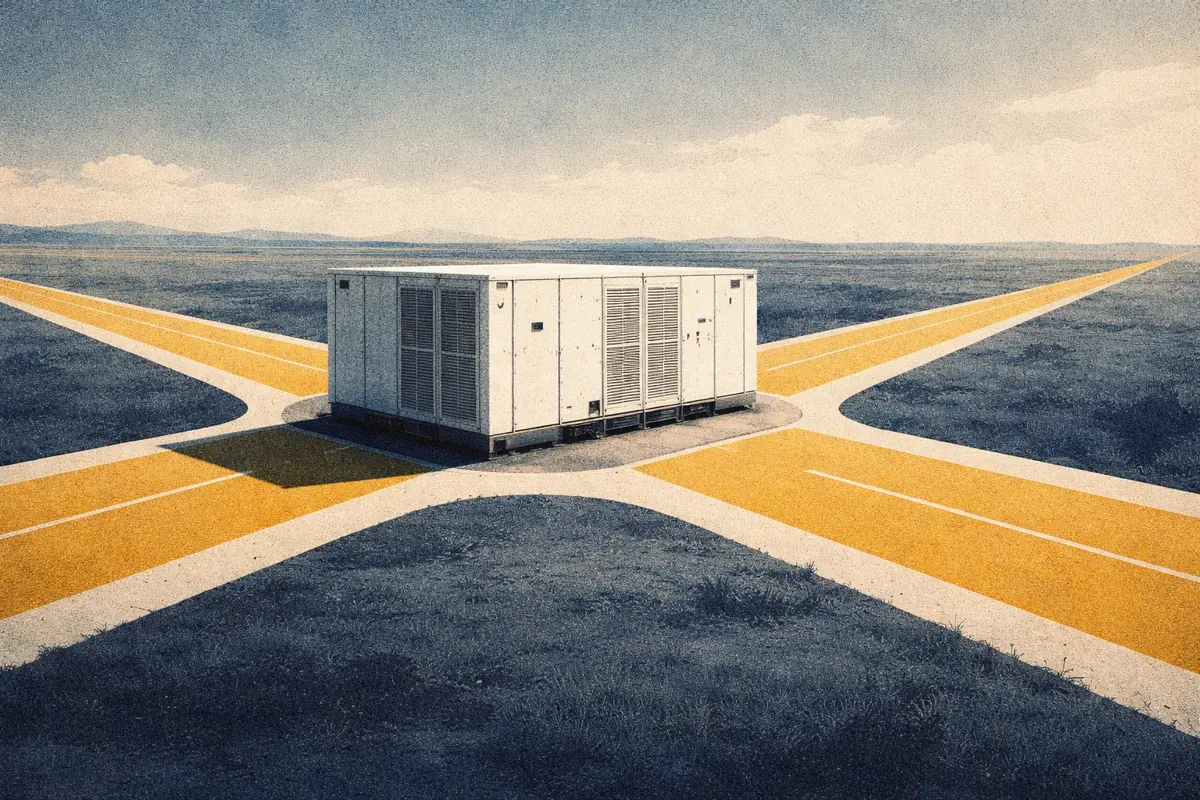V3 Forecast update: Modelling changes and revenue impacts
Version 3 of the Modo Energy Battery Revenue forecast has just been released. This update includes changes to how we model the capacity stack and the short-run marginal costs of generators, as well as quarterly updates to gas and commodity prices. In this article, we provide details on these updates and their impact on the future outlook of battery revenues.
You can read more about this update in our changelog here.
A webinar was held on April 25th to run through the changes introduced by V3 of the forecast model. You can watch this below:
Modelling changes
Capacity stack is now determined by project economics
Capacity buildout and retirements are now determined by project economics, through an iterative capacity expansion model. All capacity of gas generation, alongside battery energy storage, is now modeled through this new methodology.
As a result of this change, unabated gas generation now stays online in the model longer than in V2.4, with 4 GW still operating in 2050. CCGT retirement also occurs more slowly, particularly within the 2030s. This reflects recent policy discussions around REMA and how security of supply will be maintained throughout the transition.
Battery energy storage capacity increases to 58 GW in 2050 - an additional 8GW over the 50 GW reached in V2.4.

Variation in thermal bid curves changes daily price shape
Thermal generators now have more variable bid prices, in line with their efficiencies and ramping costs, based on historic and predicted behaviors. The increased granularity of short-run marginal costs has improved the shape of prices in the forecast compared to actuals, changing how batteries cycle in the wholesale market.
Improved storage optimization increases long-term price cannibalization
In later forecast years, when 30 GW+ of storage is online, the operation of batteries can have a significant impact on prices. An updated dispatch methodology now improves the optimization of the total storage fleet. This smooths demand and reduces price spreads compared to version 2.4, as storage cannibalizes significant spreads.
Short-term outlook - 2024 to 2027
Gas and carbon prices decrease by 12% in 2024
Future expectations of gas prices have decreased since the previous version following a mild European winter. These expectations form the basis of near-term gas prices in the model. Gas prices for 2024 are 12% lower than in V2.4 and an average of 6% lower up to 2028.
Carbon prices are also lower in the near term to reflect a further drop in ETS prices since 2023. Carbon prices in 2024 are 12% lower than in the previous version.
Download
Already a subscriber?
Log in







